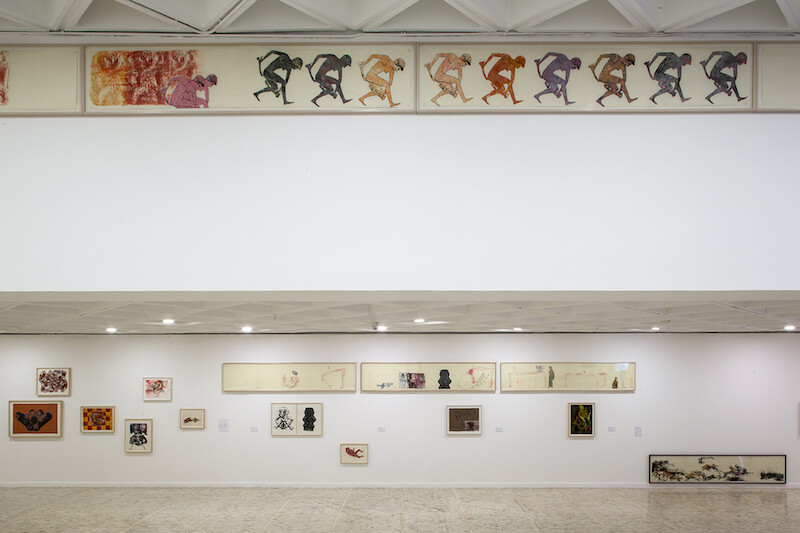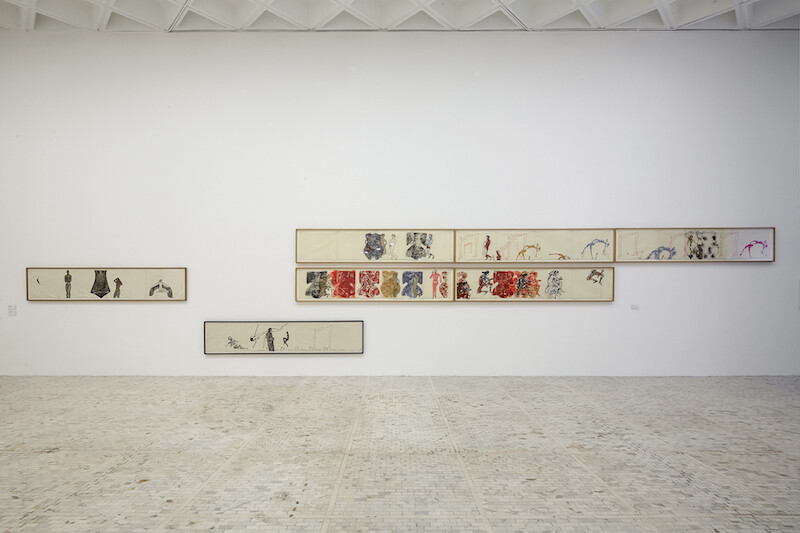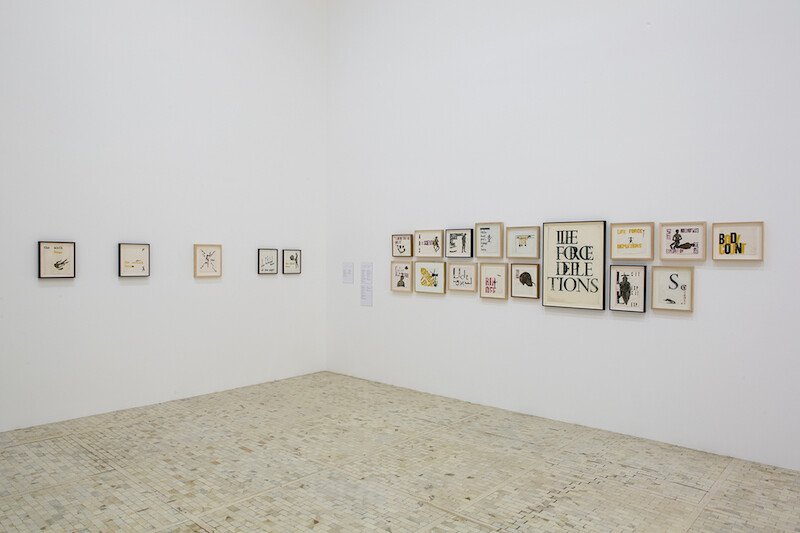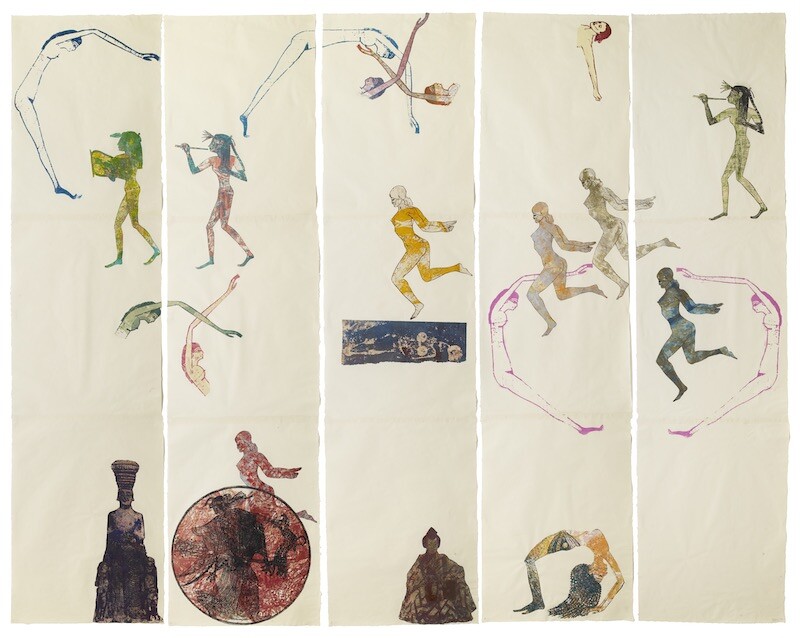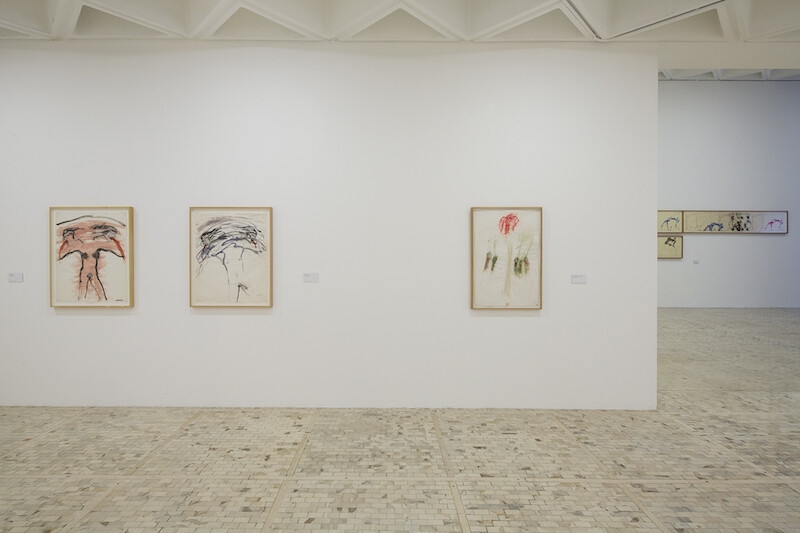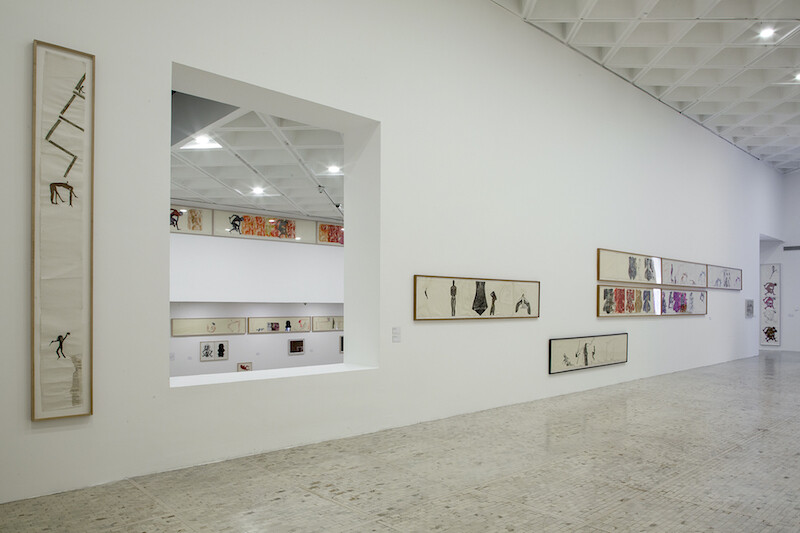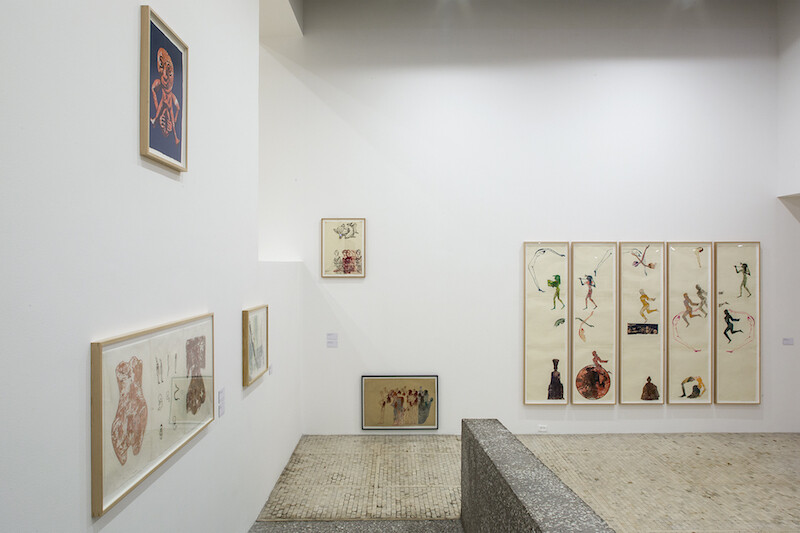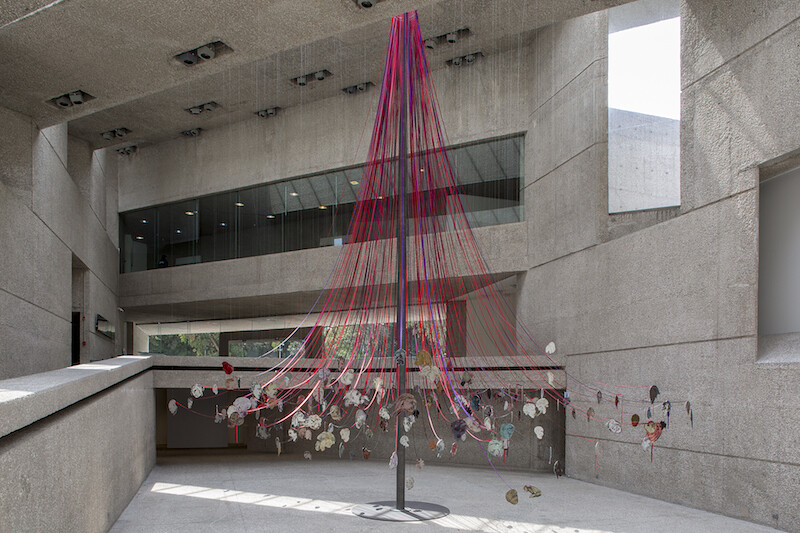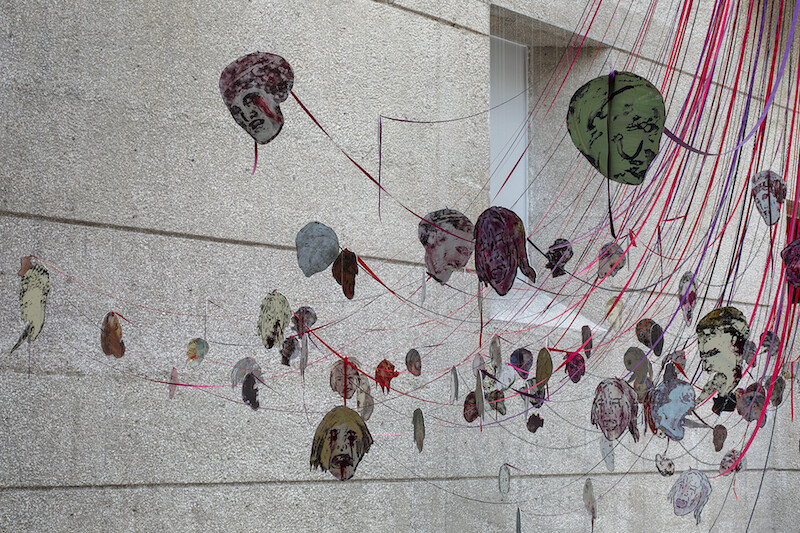Who was here first—Nancy Spero, or Hernán Cortés? It may be too much to call Spero (or anyone) a “universal” artist but her work certainly speaks to the weird postcolonial hybrids that survive as culture in the twenty-first century. Especially in this retrospective at the Museo Tamayo, a Brutalist building that shares a civic park and former world’s fair ground with Mexico City’s renowned Museo Nacional de Antropología, the scrolls, codices, and friezes that give form to Spero’s last four decades of printmaking—her Mediterranean references—make uneasy sense. In modern Mexico, layers of Spanish colonial, Aztec, and agrarian socialist civilizations build on the last’s rubble; for instance, a pre-contact, snake-shaped stone bowl fitted to a Mission era octagonal plinth becomes a font for holy water that is only superficially Catholic. Spero’s work, likewise, both matches and clashes perfectly with what’s already here. Thus the slight dissonance when you recognize in something like her series of figures dancing across long horizontal framed “scrolls,” such as Sheela and the Dildo Dancer (1987), the format of certain Mayan temple carvings. Whether this correspondence was the specific intent of guest curator Julie Ault and/or her Mexican hosts, or simply a kind of generic congruence of classical civilizations, the result is a resounding testament to Spero’s major theme: the epochal suffering of women and the innocent.
Arranged chronologically, as it is here, Spero’s oeuvre bares its own internal epochs, too. She began as a painter of torturous brown-black miasmas of figure and ground (Great Mother Birth, 1962); then, deciding to abandon the masculine canvas, came the “War Series” (1966–70), jagged gouaches in army tones on thin, wrinkled paper with descriptive names like F111, Victims in River of Blood (1967) and Kill Commies / Maypole (1967, depicting the grisly object she would realize some forty years later as a sculpture); and, perhaps most famously, her subsequent resolution to depict only female figures, and to represent the masculine only in the negative. Gradually, too—partly an ideological stance, partly a concession to rheumatoid arthritis—she stopped making marks altogether and turned to a system of stencils and collage, derived from decades of her own imagery of abject victims and bent goddesses. In any wide selection of Spero’s work, there’s no problem detecting the through lines not least because the artist often literally recycled and reiterated the same figures from Roman myth, Egyptian goddesses, Homer’s Odyssey, the Vietnam War, and the writings of Antonin Artaud as stenciled cutouts. The final work in the show, chronologically speaking, occupies the museum’s central courtyard, so that it is also the first work you see. Maypole: Take No Prisoners (2007), a tall pole surrounded by a flurry of severed, screaming heads. It serves as a culmination in a way that artists’ late masterpieces rarely do—maintaining and rephrasing, once again, one last time, the vocabulary Spero had been developing for decades.
This retrospective follows another trajectory, too—one of disintegration. The exhibition’s first two rooms, featuring the “Black Paintings” (1959–65) and the “War” drawings, respectively, are hung conventionally at eye-level. The works that follow in the last two, and much larger, rooms have edged apart to use the lower and upper portions of the walls, in what could be described as “expressive” placements (Ault’s three selections from the 34 scrolls of the “Codex Artaud” [1971–72] appear framed in a staggered stack) or even site-specific gestures, like the series of long horizontal works on paper (like Sheela and the Dildo Dancer) that hug the gallery’s ceiling like a frieze. The hang in the last room, especially, develops an interplay between works and sightlines so that supplicating figures (Mourning Women No. 3, 1989) appear inches from the floor, as magisterial ones (Artemis, Goddess and Centaur, 1983) look down on them. Ault uses the museum’s long ramp to great effect: a nearly identical, level pair of prints of a medieval European fertility symbol (an impish figure/gargoyle spreading apart its conch-like vulva) bracket the ramp’s length, so that one hangs at the usual 60 inches while the other at the ramp’s bottom winds up well above the viewer’s head. It is as if time has actually passed between them.
Outside, in the Bosque de Chapultepec, regardless of the Tamayo and the Speros inside, a squad of acrobats called voladores perform a Mesoamerican version of the maypole ceremony. Five men climb a 30-meter pole; four tie themselves to coiled ropes, push off, and follow their unwinding tethers back to earth. Spero’s work has visible armatures, too—like the fishing line that holds up the screaming heads seemingly orbiting her 2007 sculpture Maypole on ribbons and chains. And the museum has its physical limits: as wide-ranging, even encyclopedic as this survey is, there are gaps in the record, dozens of missing pieces from the “War” or “Codex Artaud” series that, taken together, emphasize in spectacular fashion the sense that cultures change, but human nature never will. “Paper Mirror” does a fine job imparting the atmosphere of Spero’s oeuvre more than its sheer, living scale. That would require a Museo Spero all its own.

